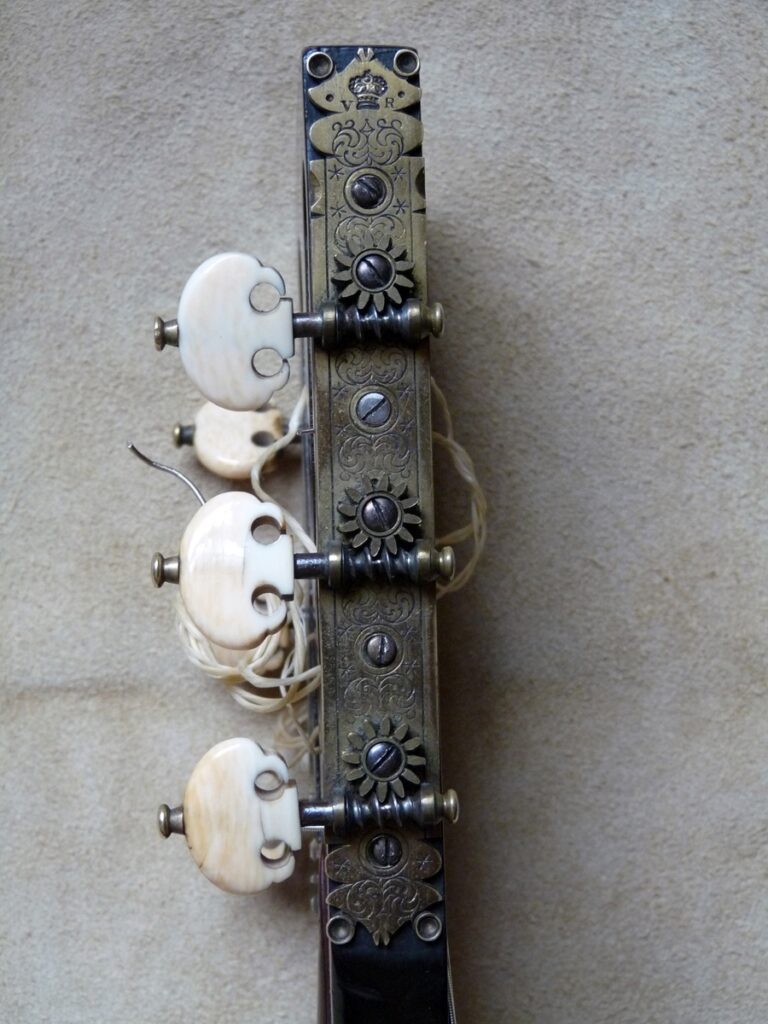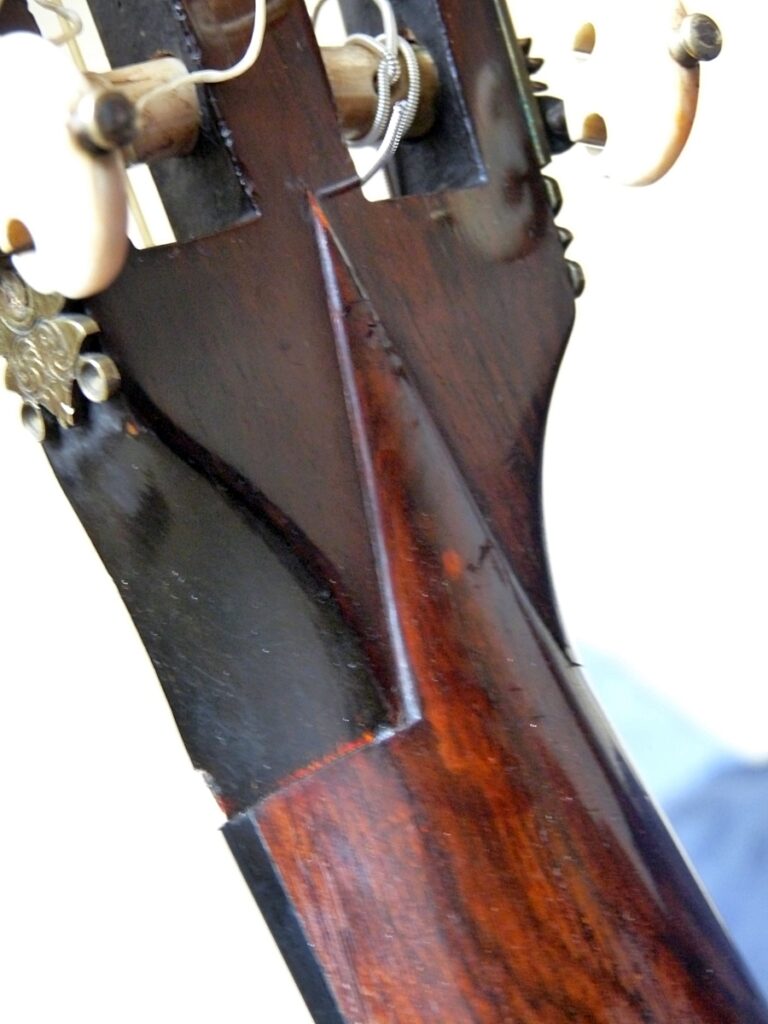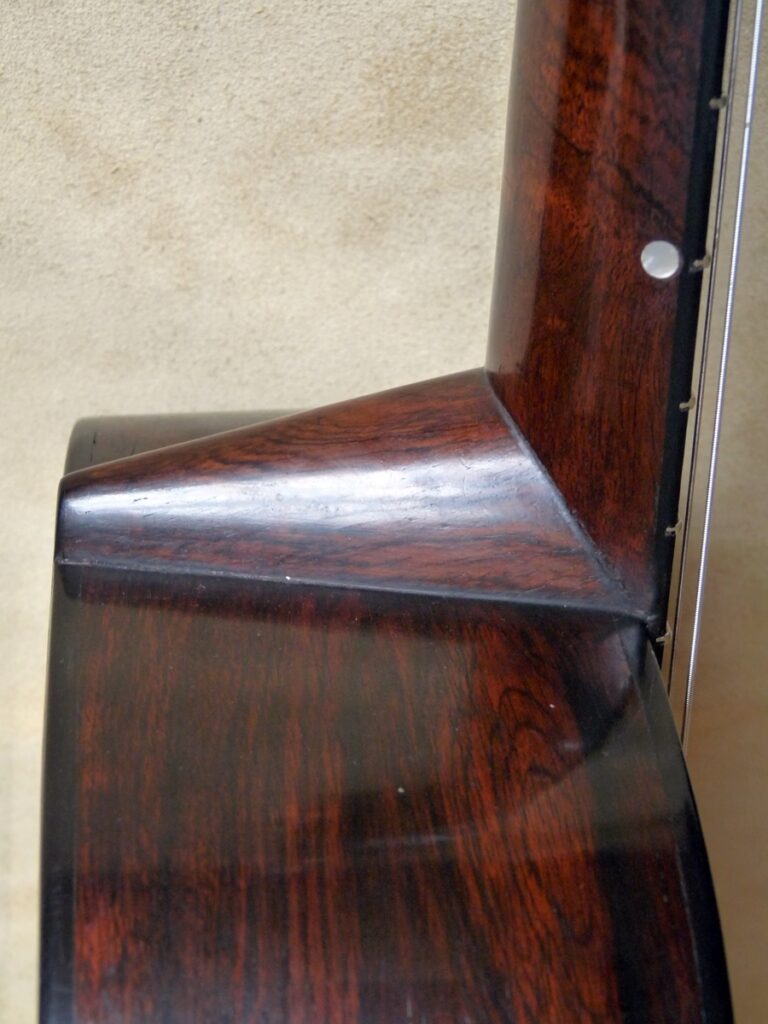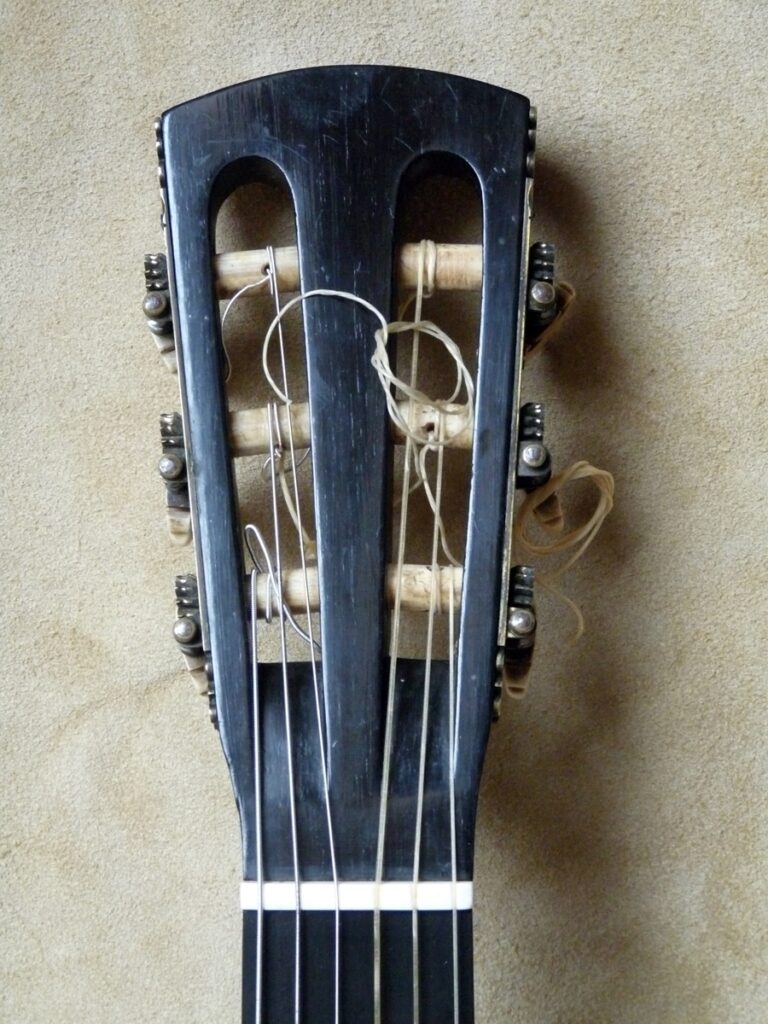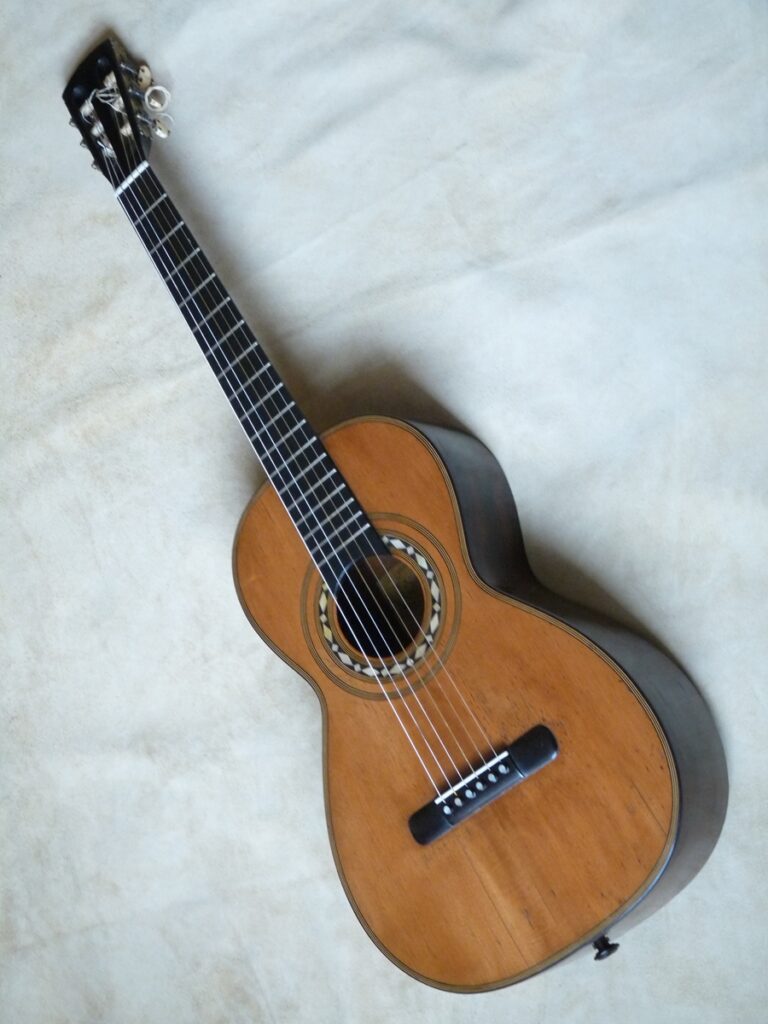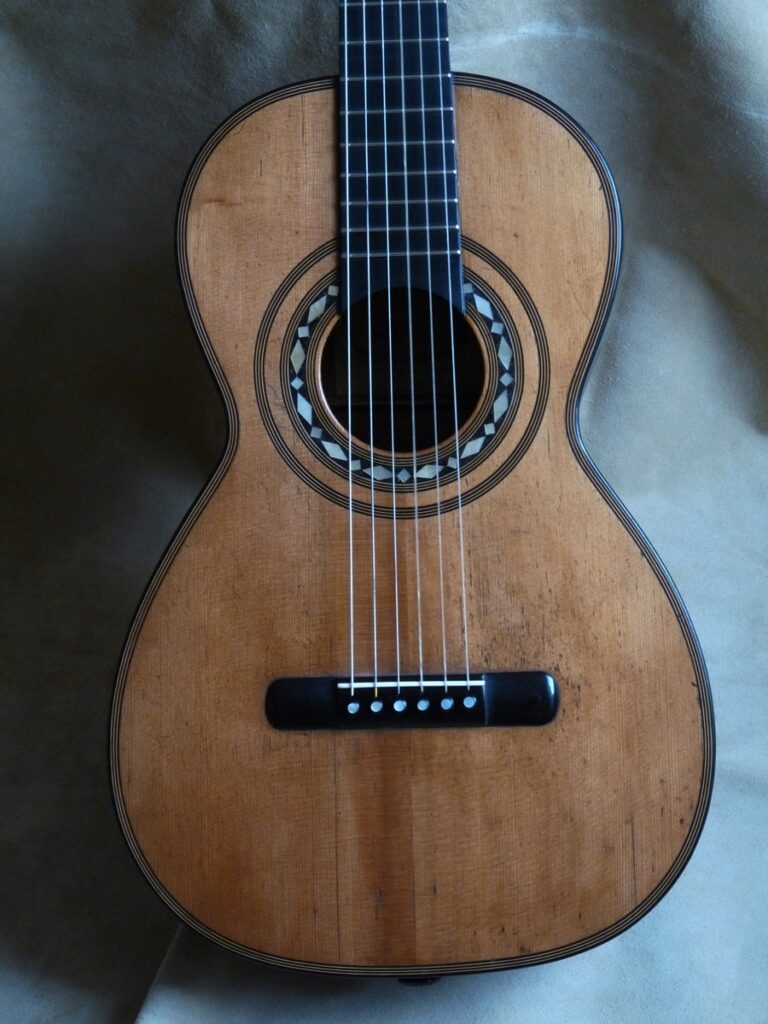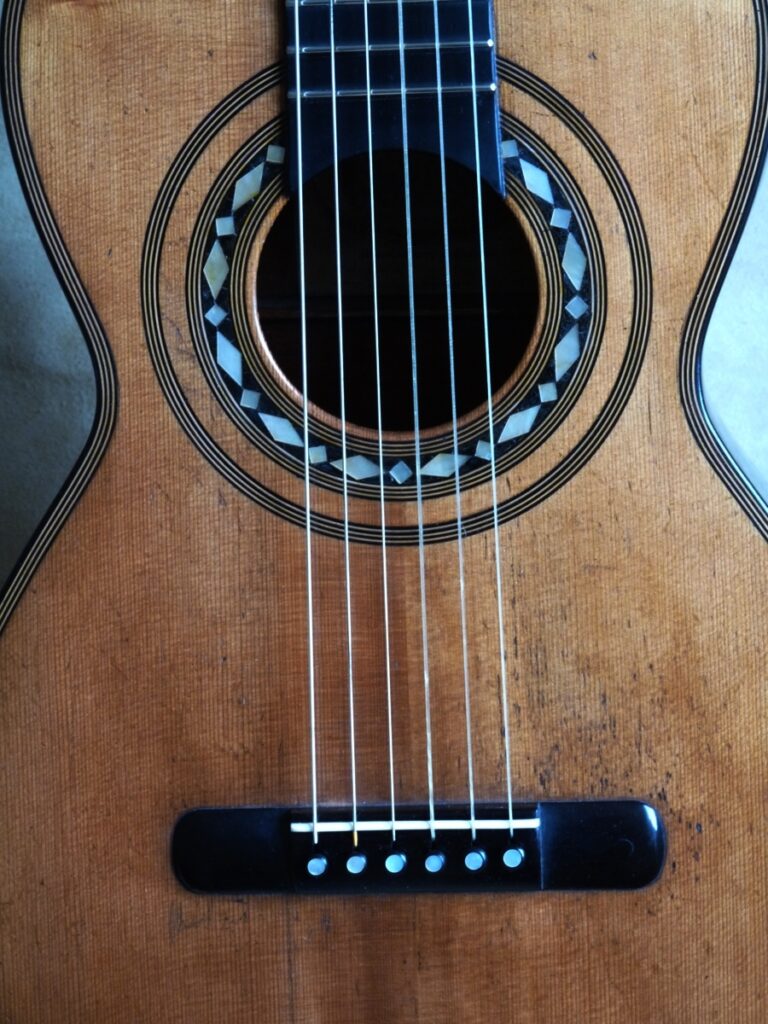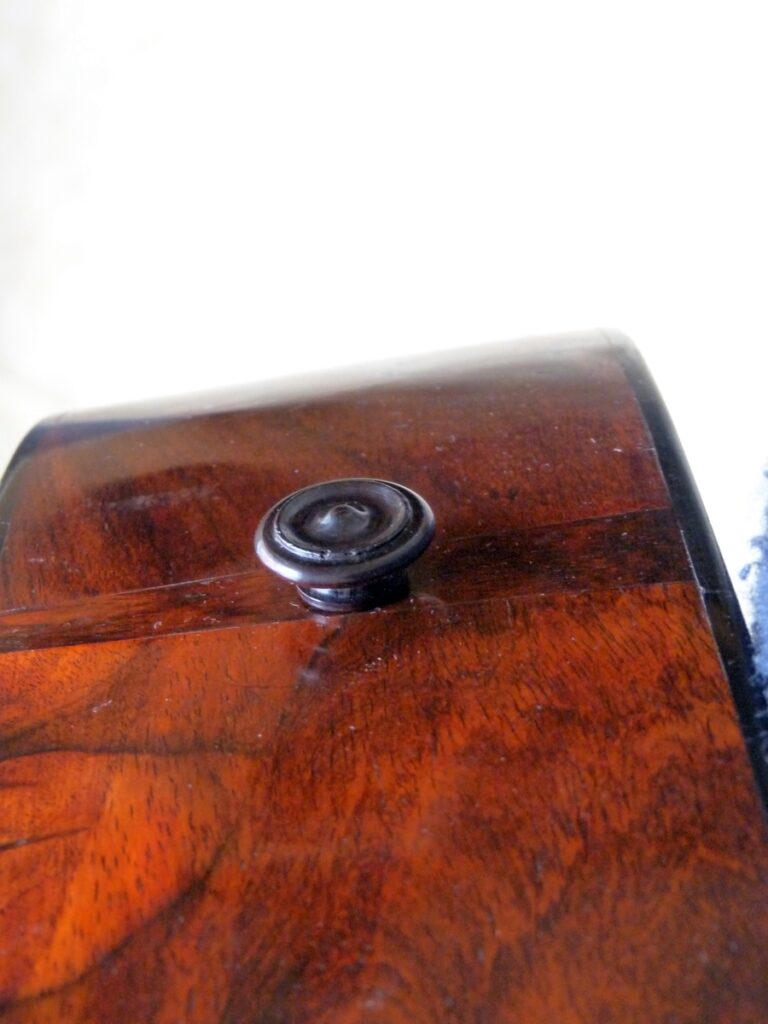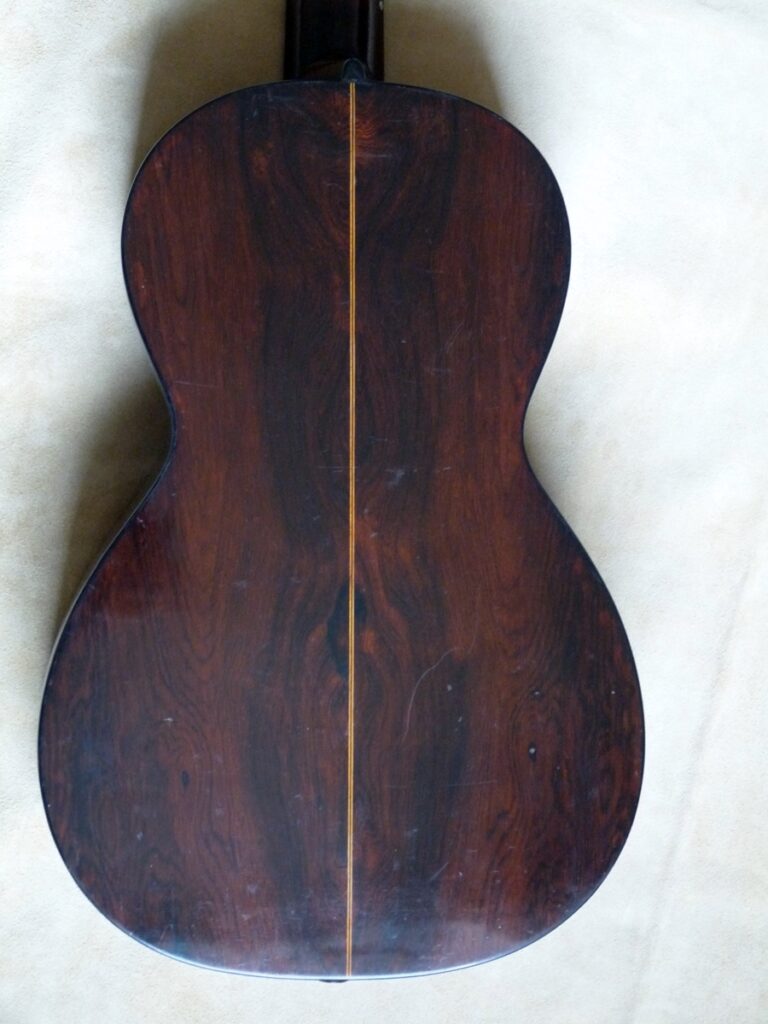Dominique and Arnoud Roudhloff were French makers trained in Mirecourt by their father Francois, who was himself an excellent guitar maker as well as a violin maker. The brothers moved to London in the 1830s and set up shop.
In 2022 I was approached by Edinburgh based lutenist and multi-string guitarist Rob MacKillop to do some work on a D and A Roudhloff guitar that he’d recently acquired. I readily agreed as I was keen to study it so that I could make a copy. It was the brothers’ X-brace design for supporting the front that had inspired me to try that method for the classical guitar back in 2009. Every guitar maker is familiar with the X-brace pattern, as it has been used throughout the 20th century and beyond for steel-string guitar production, but almost universally ignored for classical guitar making since the Roudhloff brothers’ day. Prior to 2009, apart from some early experimentation, I had used the Spanish fan-bracing method almost exclusively. Although I’ve seen a number of their original guitars over the years, I hadn’t had the opportunity to make a copy of their Melophonic model before. So Rob and I made an amicable agreement that I would sort out his guitar in exchange for keeping it a while. The photos below are of the original, which is very beautifully made.
An x-ray photograph showing the interior workings of a Roudhloff Melophonic guitar, which appeared in Dr. James Westbrook’s book, “The century that shaped the guitar”, was my first introduction to the idea of using an X-brace to support the soundboard in a classical guitar. Between 2009 and 2016 I used X-bracing in a similar way to the Roudhloffs, adapting it in a variety of ways to suit my existing guitar body shapes. I found it to be a very flexible system that worked well whatever the size of the box. So in 2017, when I was approached to make a Roudhloff style 8-string guitar, I was keen to employ the X-brace pattern in it. It was the first time I would use it in a Roudhloff body shape. At that time I had only seen the X used in Melophonic guitars and assumed that the 8-string models were all ladder-braced. However, I discovered recently that there are some original X- braced 8 -string guitars floating about too!
This guitar has a spruce front, supported by the X-braces of course – not all Melophonic guitars have identical bracing though – the positioning of outer braces vary between fan and more radial placement. This is not surprising, since it is natural to experiment. I have also experimented in this way. The sides are of Brazilian rosewood with a rosewood veneered mahogany back. The deep linings are also mahogany with a doubled lining for the front. The back has transverse mahogany braces at the waist and lower bout, but unusually, in the upper bout there is a large ” slipper ” instead of a brace. It is in the same position as the slipper in a through neck, but much bigger, and it is a separate piece that butts up against the top block. Quite why they did this is unclear to me, but it supports the upper bout well. The neck is veneered in rosewood, as are the back and front faces of the head. The neck is glued onto the top block, and clamped with a screw in typical French style. The sound of this instrument is enchanting – a gorgeous tone that is well focused, but rich in harmonics and warmth, with sweet trebles and a solid bass. The scale length is 631 mm. The nut width is rather narrow, so narrow in fact, that the slots in the head are tapered towards the nut. The copies I will make have no need to be that narrow, of course.
I have now built a six-string copy of this guitar, but it is not yet finished. I will post photos of it here when it is. It has a spruce front, of course, like the original. I used recycled mahogany for the back, veneered with Santos rosewood and solid Santos rosewood ribs. I have tried to produce a faithful copy, although I didn’t veneer the neck – I used a piece of solid Cuban mahogany, with the long tapered V-joint head. I’ve ordered some historically appropriate- looking, reverse-geared, tuning machines for it from Nicolo Alessi.
